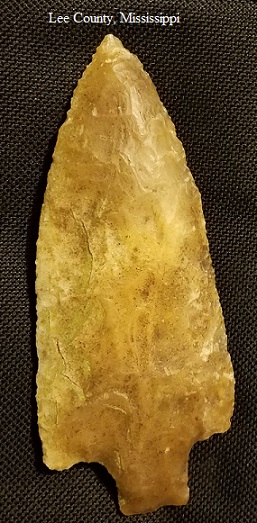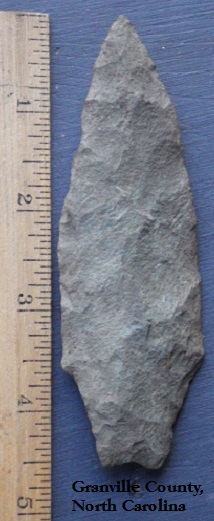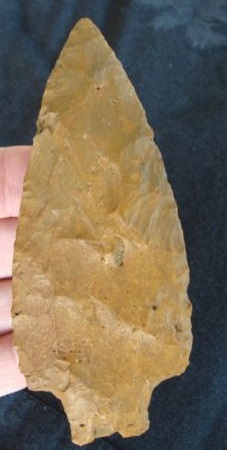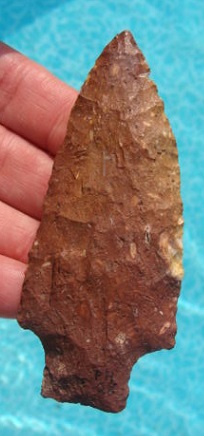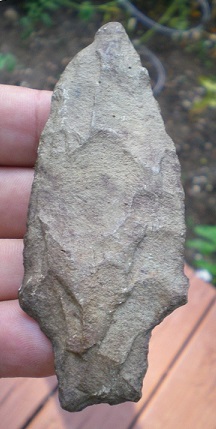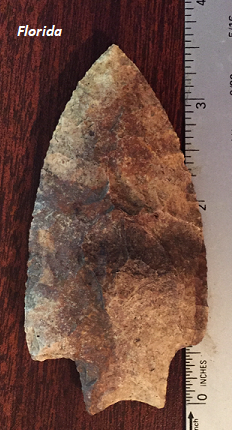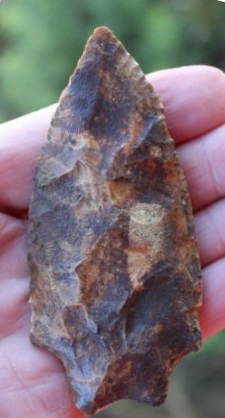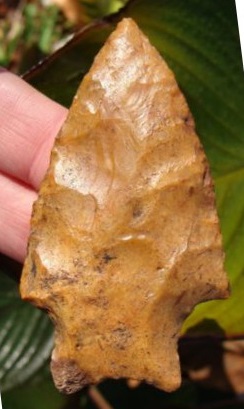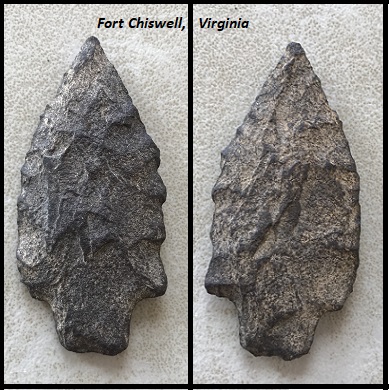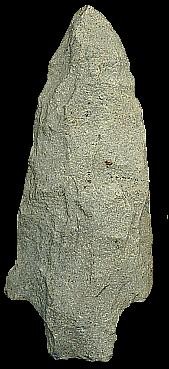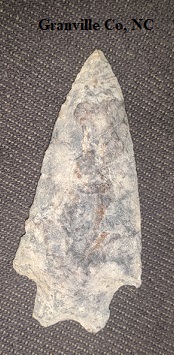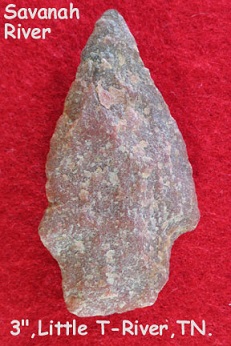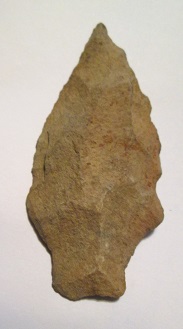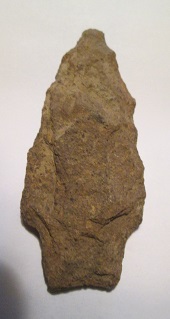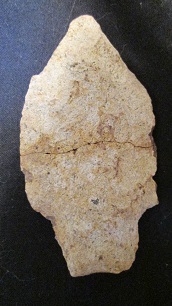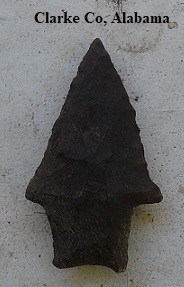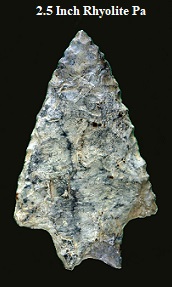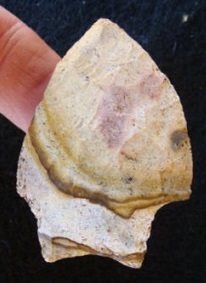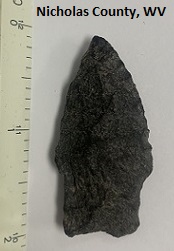Commonly Utilized Material:
Varies depending on available material but commonly used
materials include:
Antietam- Erwin Quartzite, rhyolite, slate, quartz, chert,
jasper, chalcedony, and hematite.
Name Details:
Named By: William H. Claflin
Named For: Savannah River area of South Carolina / Georgia
Date Identified: 1931
Type Site:
Savannah River
Cluster: Savannah River Cluster
Date:
Cultural Period:
5,000 - 3,000 B.P.
Middle to
Late Archaic
Middle Holocene to Neoglacial
Glacial Period:
Culture:
Outline is Representative of Size and Shape:
Description of Physical Characteristics and Flaking Pattern:
This is a medium to large triangular stemmed point with a flattened to elliptical cross section. The blade is primarily excurvate, but may curve at the tip and have parallel edges one half of the blades length. The shoulders may vary from horizontal to
having an upward slope. The stem may vary from straight to being slightly contracting to slightly expanding. The base is
primarily concave with some examples having a almost straight base. Basal thinning is commonly seen on this point. Basal
grinding may be light, but is not present on most examples. This point has a random flaking pattern.
Size Measurements: Total Length - 40 to 170 mm (60 to 100 mm average), Stem
Length -
10 to 23 mm (14 to 16 mm average), Blade Width - 28 to 77
mm (37 to 50 mm average), Stem Width at Shoulders - 17 to 39
mm (21 to 27 mm average), Basal Width - 16 to 35
mm (17 to 25 average), Thickness - 10 to 14 mm
Distribution:
Distribution Comments:
This point is primarily found throughout the Appalachian mountain range to the Atlantic coast and from New Jersey down the coast into Florida. This point is also represented
throughout the Tennessee River Valley.
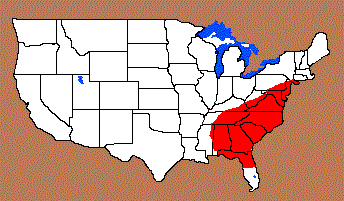
Similar Points:
Atlantic, Abbey, Arredondo, Bascom, Broad River, Elora, Fox Creek, Genesee, Gypsy, Hamilton, Johnson, Kirk, Levy, Maples, Piedmont, Seminole, Snook Kill, Swatara, Thonotosassa, Wacissa Additional Comments:
There are regional differences in size. Coe (1959) reports
that most examples found in North Carolina average a length of 100
mm while Cambron (1962) report average lengths of 50 mm. based on
examples from Alabama.
Whatley (2002) notes that later Late Archaic and earlier Early Woodland
period stemmed points may be misclassified as Savannah Rivers points.
Earlier Elora and Paris Island points have a narrower stem and commonly has
an convex rather than concave basal edge. Early Woodland types, such
as Swannanoa and Small Savannah River, must be differentiated by size and
ceramic associations.
Point Validity: Valid Type
Claflin was an amateur archaeologist who conducted expeditions throughout the United States discovering and cataloging archaeological sites. This type was named in his publication on
the Archaeology of Georgia and South Carolina and has many professional references. This is considered a valid type.
.
Age Details:
Sassaman (1995) provides a date range of 4,150 to 3,800 B.P. based on the
occurrence of classic large Savannah River points of the Mill Branch phase
in the Central Savannah River Area.
Do you see information that is incorrect on this
page, or do you have information that should be added? If so, please:
or e-mail
Questions@Projectilepoints.net

References: (See Reference Page, Entry Number):
12,
17, 23, 30, 37, 58, 59, 162, 167, W10, W11
Savannah River Projectile Point, Savannah River Arrowhead
